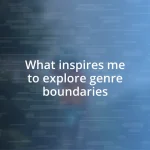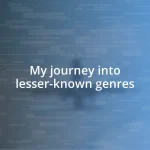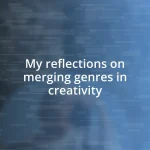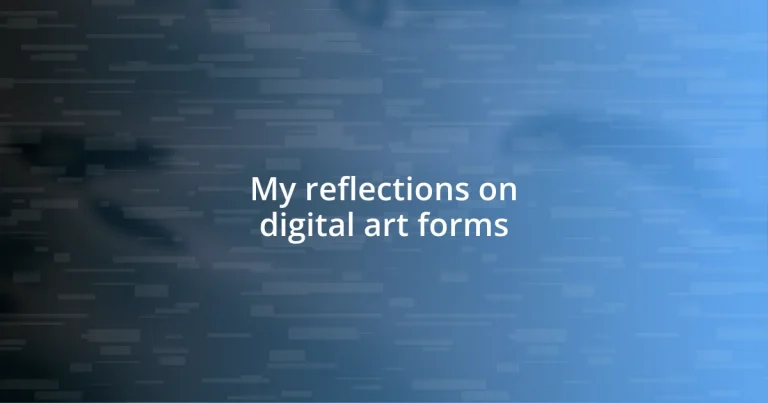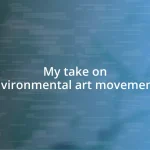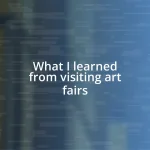Key takeaways:
- Digital art combines creativity and technology, enabling global connectivity and profound emotional expression through various mediums.
- Techniques like layering, brush customization, and animation tools enhance the artistic process, fostering creativity and exploration.
- Challenges for digital artists include staying updated with software, navigating critique culture, and balancing work-life boundaries.
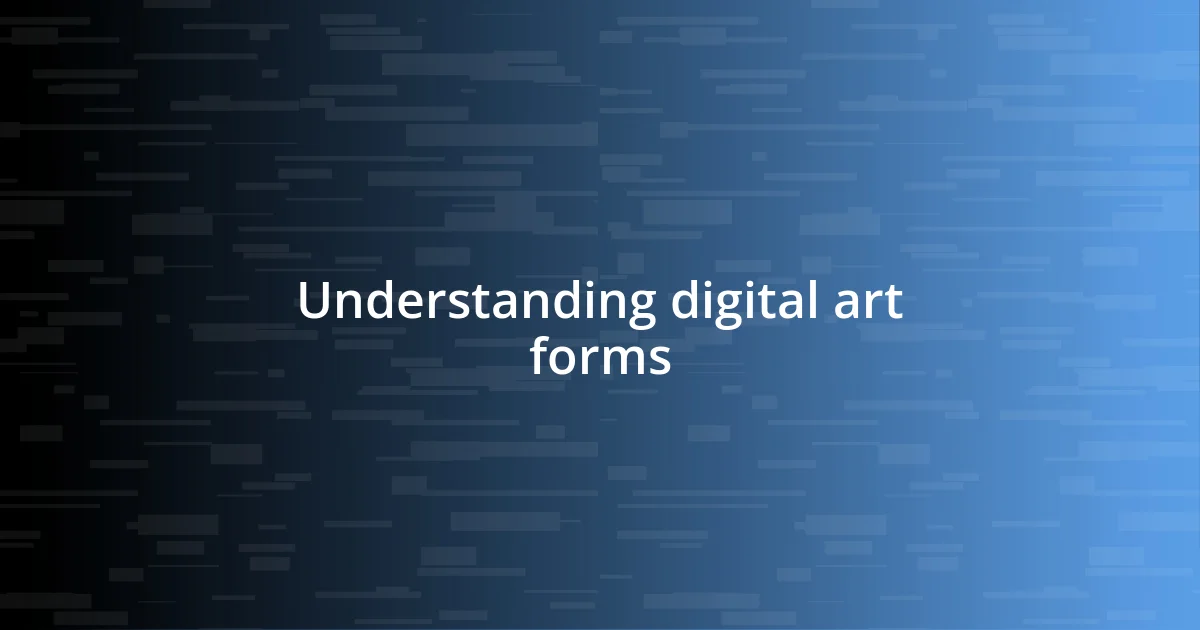
Understanding digital art forms
Digital art forms represent a fusion of creativity and technology, reshaping how we express ourselves. I remember the first time I experimented with digital painting; the freedom I felt was exhilarating. With just a few clicks, I could explore a myriad of colors and textures, unlocking a world of possibilities that traditional mediums simply couldn’t offer.
Have you ever pondered how digital platforms have democratized art? It’s incredible to think that anyone with access to a computer can showcase their work to a global audience. I recall scrolling through countless online portfolios and finding inspiration from artists halfway across the world. This connectivity not only enriches our understanding of different cultures but also allows us to collaborate in ways we never could before.
The emotional layers in digital art can be surprisingly profound. While working on a piece, I often find myself digging into my feelings, translating emotions into pixels. Isn’t it remarkable how a simple artwork can evoke such strong reactions? I believe that through these digital mediums, we can connect deeply, tapping into a shared human experience that transcends boundaries.
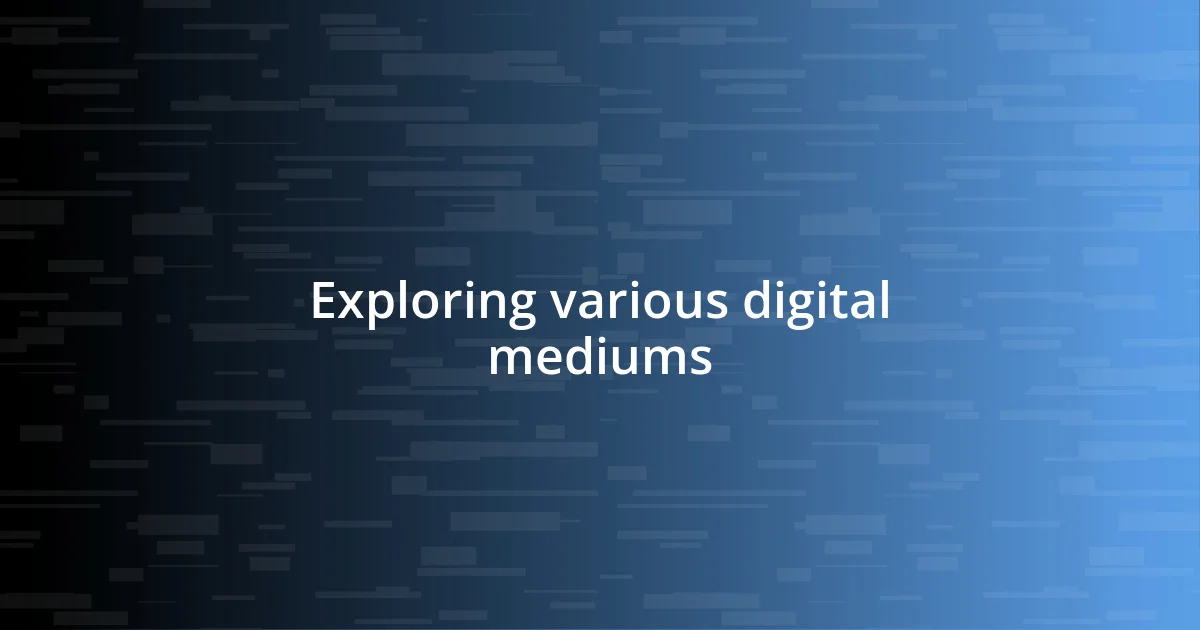
Exploring various digital mediums
Exploring various digital mediums can be a fascinating journey. I’ve dabbled in everything from digital painting to animation, and each medium comes with its own unique touch and feel. One thing I love about digital art is how versatile it is; for instance, creating intricate illustrations in Adobe Illustrator feels different than sketching in Procreate. They each serve various creative expressions, giving me a chance to experiment and discover what resonates most.
When I first ventured into 3D modeling, it was awe-inspiring to manipulate shapes and forms in a virtual space. I remember feeling like a sculptor, but in a pixelated realm. This medium opens up an entirely different dimension of creativity, allowing me to visualize characters and environments that exist only in my imagination. How often can you say you can turn your ideas into tangible concepts without any physical constraints?
Let’s not overlook the beauty of digital photography. Capturing a moment digitally is like painting with light; I often go through my photos, and it feels almost meditative to edit them. The ability to enhance colors, adjust lighting, and share these snapshots online makes photography incredibly rewarding. What emotions do these captured moments evoke for you? I believe they often have the power to tell a story and convey feelings that words alone sometimes cannot express.
| Medium | Unique Features |
|---|---|
| Digital Painting | Flexible tools, layers, and textures create a painterly effect. |
| 3D Modeling | Creates depth and dimension, allowing for visualization of complex forms. |
| Digital Photography | Instant capture and editing capabilities can immortalize fleeting moments. |
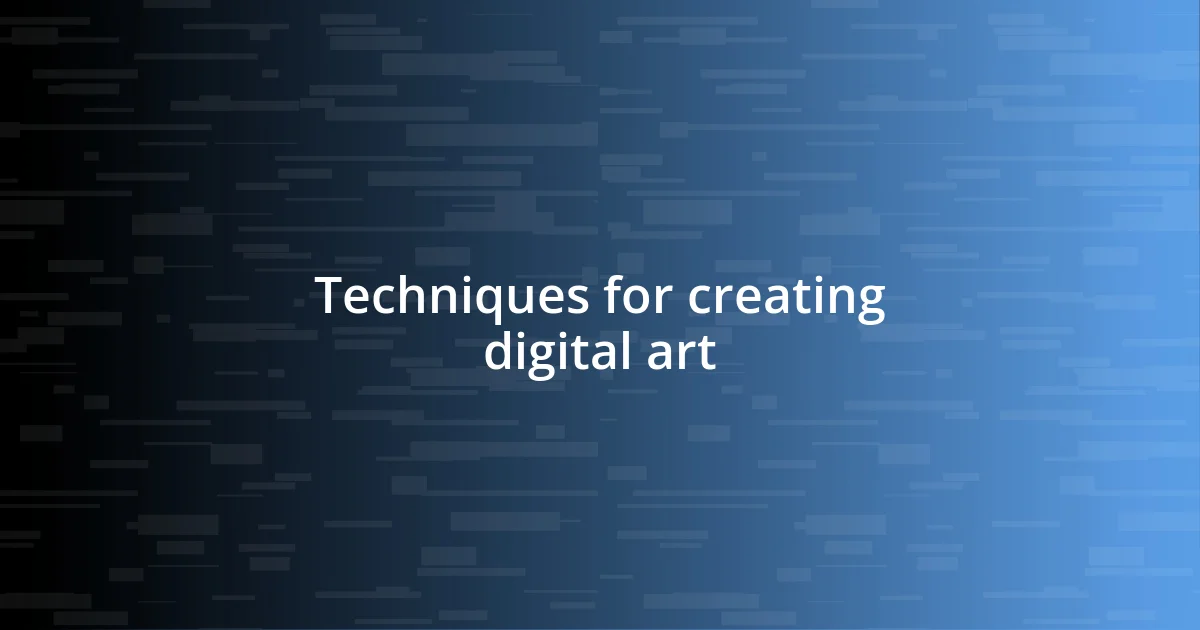
Techniques for creating digital art
Creating digital art opens up a world of techniques that artists can utilize to express their visions. For me, one of the most liberating techniques is layering. While working in programs like Photoshop, I often start with a rough sketch and slowly add layers, building up textures and colors. This method allows for adjustments without fear of ruining the underlying work—it’s a bit like sculpting with light. I remember one project where my initial concept completely transformed as I layered different elements. Each addition brought new life to the artwork, and it was eye-opening to see how much the piece evolved through that process.
Here are some essential techniques for creating captivating digital art:
- Layering: Enables non-destructive editing and dynamic compositions.
- Brush Customization: Personalizes the painting experience, giving unique textures.
- Masks and Blending Modes: Allow for intricate image manipulation and effects.
- Vector Art Techniques: Provide crisp lines and scalability for illustrations.
- Texturing: Adds depth and richness, making your art feel more tactile.
- Animation Tools: Bring static pieces to life, creating an immersive experience.
I find that combining these techniques fosters a playful exploration of creativity. Each time I employ them, I can’t help but feel a rush of excitement, as if discovering a new color on my palette.
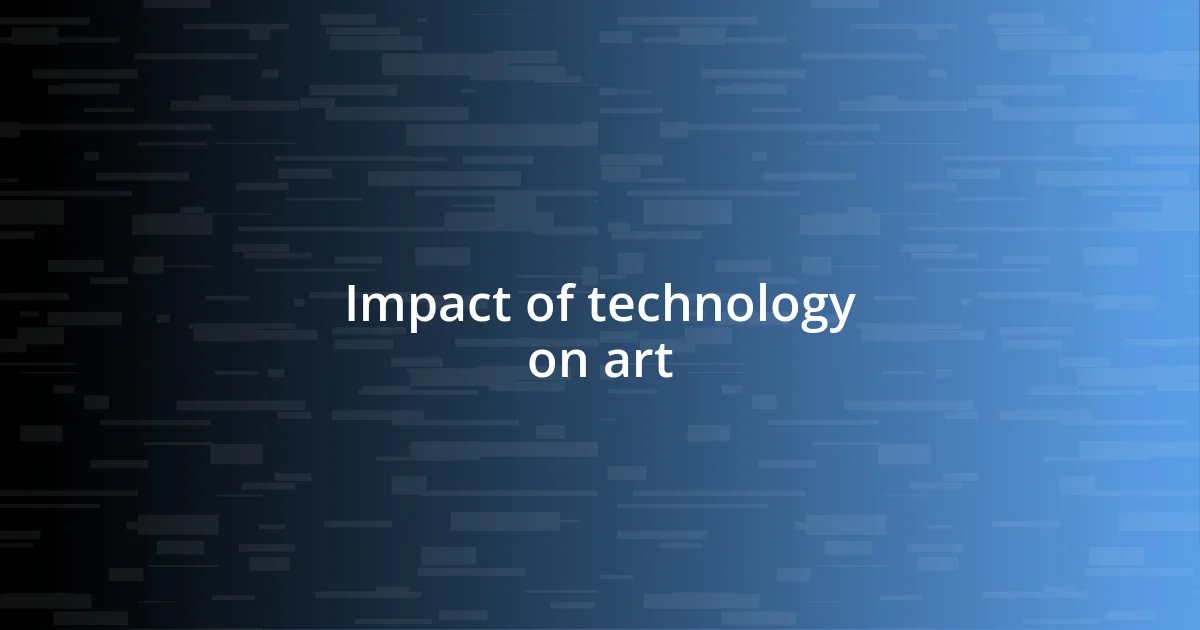
Impact of technology on art
It’s fascinating how technology has not only opened the doors to new art forms but has also dramatically altered the way we perceive and create art. For instance, when I first experimented with augmented reality in art, I felt like a kid in a candy store. The ability to overlay digital creations in the real world transformed my perspective on art’s potential—suddenly, my drawings could leap off the page and interact with the environment. Have you ever imagined walking through a gallery where artworks change before your eyes? That’s the beauty of technology in art!
The influence of technology is mirrored in how collaborative art has become. Platforms like online sketching tools make it possible for artists, regardless of location, to work on pieces together in real-time. I recall a project I participated in, where our diverse styles merged into a single artwork. It was exciting to see how technology bridged our differences, resulting in something far greater than any of us could have created alone. Isn’t it amazing how collaboration can spark creativity in unexpected ways?
Moreover, social media has revolutionized the art world by providing artists with an instant platform for sharing their work. I remember the thrill of posting my first digital creation online and receiving feedback from people around the globe. It was not just validation—it sparked discussions and connections with other artists that I still cherish. Don’t you think the community aspect of technology enhances the creative process, allowing us to grow and evolve through collaboration and inspiration?
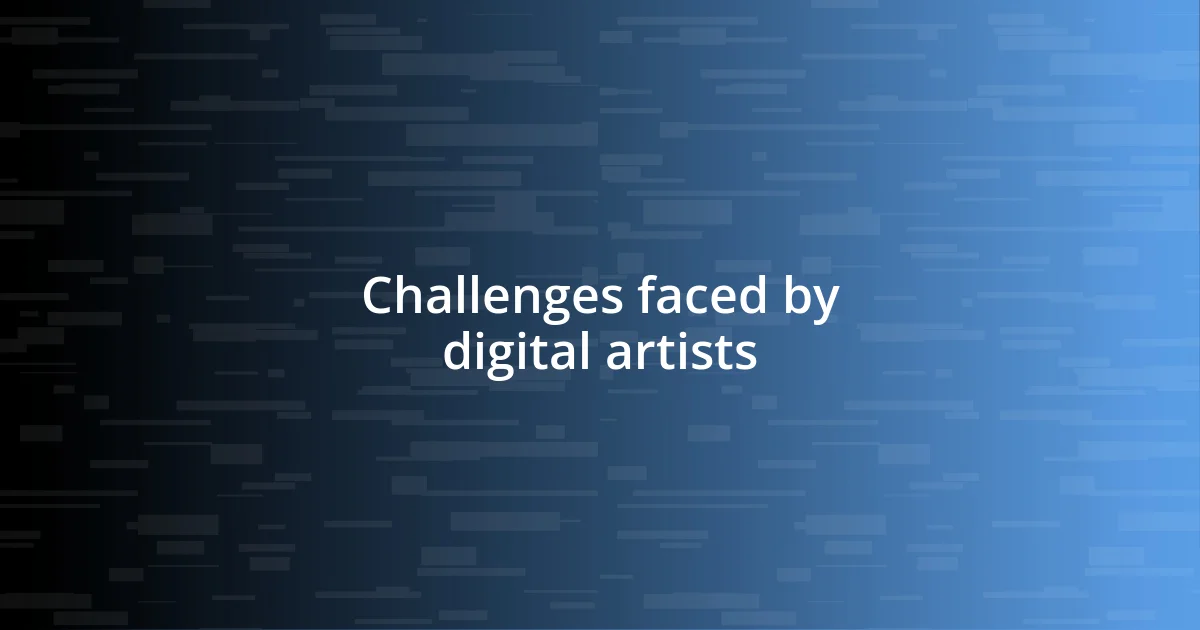
Challenges faced by digital artists
Digital artists face a unique set of challenges that can sometimes feel overwhelming. One issue that resonates deeply with me is the constant pressure to stay technologically updated. I remember when I first started using digital art software; each new version brought unfamiliar tools and features that left me feeling lost. How do you keep up with everything while also trying to develop your own style and voice? It can be a juggling act, for sure.
Another significant challenge is the critique culture within the digital art community. While feedback can be invaluable, I’ve found that criticism can sometimes sting, especially when it comes from strangers. There’s a raw vulnerability in sharing my work online, and I often think about how easily a few harsh words can overshadow the joy of creating. Have you ever hesitated to share your art for fear of judgment? That’s a hurdle many artists face, and it often leads to self-doubt.
Lastly, the boundary between work and personal life can blur painfully for digital artists. I’ve felt the pull to constantly create, driven by deadlines and the competition to stay relevant. I recall a period when I neglected my well-being in favor of meeting project demands. It was exhausting! Balancing passion with self-care is crucial, yet it’s a struggle many of us know all too well. How do we nurture our creativity without sacrificing our mental health? It’s a critical question for anyone navigating the digital art landscape.
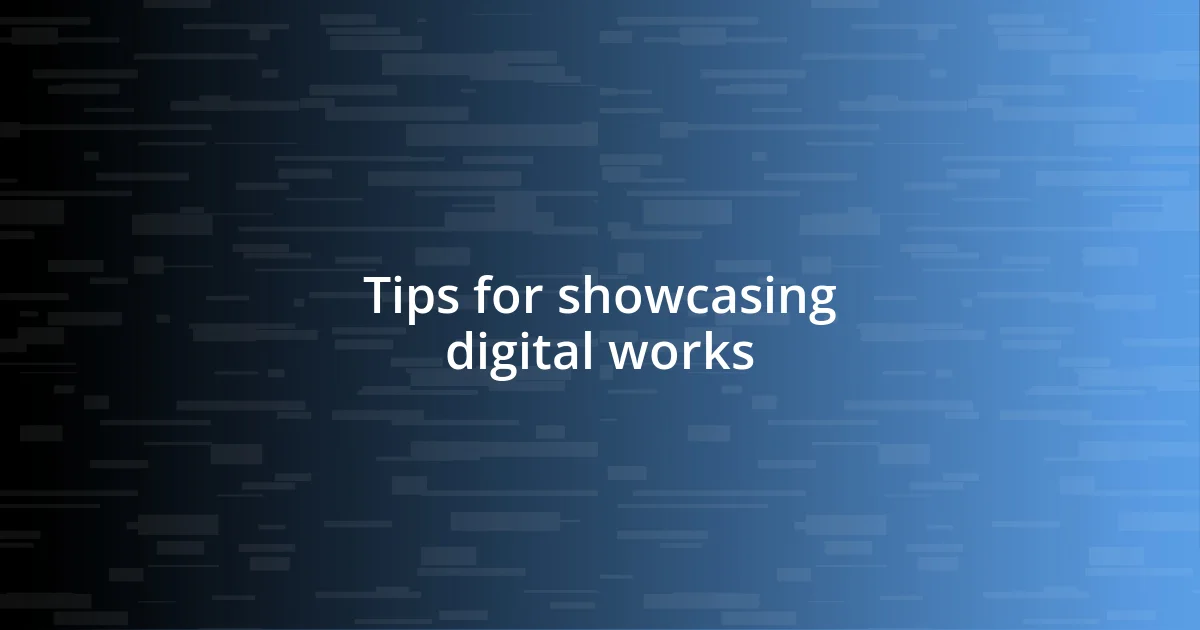
Tips for showcasing digital works
When it comes to showcasing digital works, presentation matters immensely. I’ve discovered that choosing the right platform can make a significant difference. For instance, when I created an online portfolio using a dedicated website rather than a basic social media profile, I felt an immediate sense of professionalism. It’s like dressing up for an important occasion—first impressions do count! Have you considered how your choice of platform reflects your artistic identity?
Another tip that has worked wonders for me is curating my displays carefully. I remember a time I included only my latest pieces in a gallery show, eliminating older or less developed works. This focused approach not only showcased my growth as an artist but also communicated a clearer message about my current style. What story are you trying to tell through your showcased works? Choosing a narrative or theme can elevate your display from simply a collection to a compelling experience.
Interaction can also enhance how you share your digital art. Once, at an online exhibition, I decided to host a live Q&A session after presenting my work. The excitement from engaging with viewers in real-time was exhilarating! They shared their thoughts and experiences, creating bonds over the art. Have you thought about how sharing your creative process could deepen the connection with your audience? Opening up about your techniques and inspirations not only makes your work more relatable but also invites a richer dialogue about art itself.




